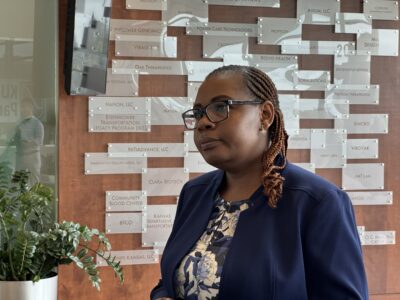Past lessons offer Legislature a solution for schools
Topeka ? With a court breathing down its neck, the Kansas Legislature puts aside politics and forms a school finance bill that wins approval from Republicans and Democrats, and ultimately the judiciary.
Sound like a fantasy?
Essentially, that is what happened 13 years ago in the Statehouse.
“We really had a coalition from both parties, and much of the state, that put together a plan that worked,” said former Senate Majority Leader Fred Kerr, a Republican from Pratt.
The example of folks like Kerr and former state Rep. Joan Wagnon, a Democrat from Topeka, crossing party lines back then is a lesson current lawmakers should heed as they prepare for the June 22 special legislative session, said House Minority Leader Dennis McKinney, D-Greensburg.
The Kansas Supreme Court has declared the school finance system unconstitutional.
On June 3, it struck down a plan by Republicans, who hold substantial majorities in the Legislature, to increase school funding by $142 million and allow local districts to raise property taxes. In its unanimous decision, the court said the $142 million was too low and ordered the Legislature to add an additional $143 million by July 1, and it said the increase in local property taxes would further widen school funding disparities between rich and poor districts.
“Now it is time for Democrats and Republicans in the Legislature to once again put aside politics and do what is best for the people of Kansas, our economy and our children,” McKinney said.
So far, McKinney’s recommendation has been ignored during the run-up to the first special session since 1989.
Gov. Kathleen Sebelius, a Democrat, and House Speaker Doug Mays, a Republican – potential rivals in the 2006 governor’s race – have been carping at each other over how to proceed with the session.
Conservative Republicans say the Kansas Supreme Court cannot tell the Legislature how much to fund schools, and some have threatened to defy the court order, even if that means going to jail.
In the early 1990s, the state was in the middle of a school funding crisis, but lawmakers approached it differently.
Shawnee County District Court Judge Terry Bullock had issued a pre-trial warning to Gov. Joan Finney and legislative leaders to equalize spending on schools.
The Legislature was more equal then between the two parties; Democrats held a 63-62 advantage in the House, while Republicans held a 22-18 margin in the Senate. Finney was a Democrat, but she had an independent streak that often defied partisan allegiance.
With that kind of parity, Democrats and Republicans were more adept at building coalitions on major issues, Kerr said.
Now with Republicans owning huge majorities, there are many members of both parties who simply don’t know how to reach out, he said.
“There is less of a track record in recent years of the two parties working together,” he said. Currently, Republicans have a 30-10 majority in the Senate and an 83-42 majority in the House.
Kerr added that some coalitions were built around geography, regardless of party affiliation.
Tough tax increases
Wagnon, the former House Taxation Committee chairwoman who is now Secretary of Revenue, said the level of bipartisanship in 1992 was in stark contrast to the way the Legislature operates now.
“Fred Kerr stepped up to the plate and made it happen,” Wagnon said. “To this day, I’m in awe.”
Wagnon said getting lawmakers then to increase income taxes for schools, while also delivering some property tax relief, was not an easy chore.
“You were dragging people from one paradigm into another,” she said.
Wagnon said she set up shop in her Capitol office and cooked chili in a little crockpot to feed to members in small groups, while she went through flip charts explaining the deal.
“I never worked so hard in my life,” she said.
Former Rep. Bill Reardon, a Democrat from Kansas City, Kan., was a member of the House Education Committee and at the time speaker pro tem.
He said party affiliation on the education committee “really didn’t make a difference.
“We were all committed to this idea of what would get 63 and 21 (majorities in the chambers). There were failures along the way, but it was a people-had-their-eye-on-the-prize sort of thing,” he said.
Anger at the court
Reardon, currently a lobbyist for the Kansas City, Kan., school district, said he was disheartened to hear lawmakers now talking about challenging the court decision.
“As a former high school teacher, I can’t imagine someone who is sworn to uphold the Constitution publicly advocating that,” he said.
But Kerr said he empathized with Republicans angry with the court because he said when the court refused to let GOP legislators address the court it didn’t allow the Legislature to defend itself.
Regardless, talk from some conservative Republican legislators of going to jail to fight the court was “radical,” Kerr said.
The former lawmakers concede that in today’s anti-tax political climate it will be tough to build a bipartisan coalition.
“I feel badly for legislators. They have such a difficult job this month,” Kerr said.
Wagnon said the difference from 1992 is that today there are many anti-tax groups soliciting pledges from candidates and lawmakers.
“We didn’t have the mentality that no matter what happens, we will never raise taxes,” she said.







